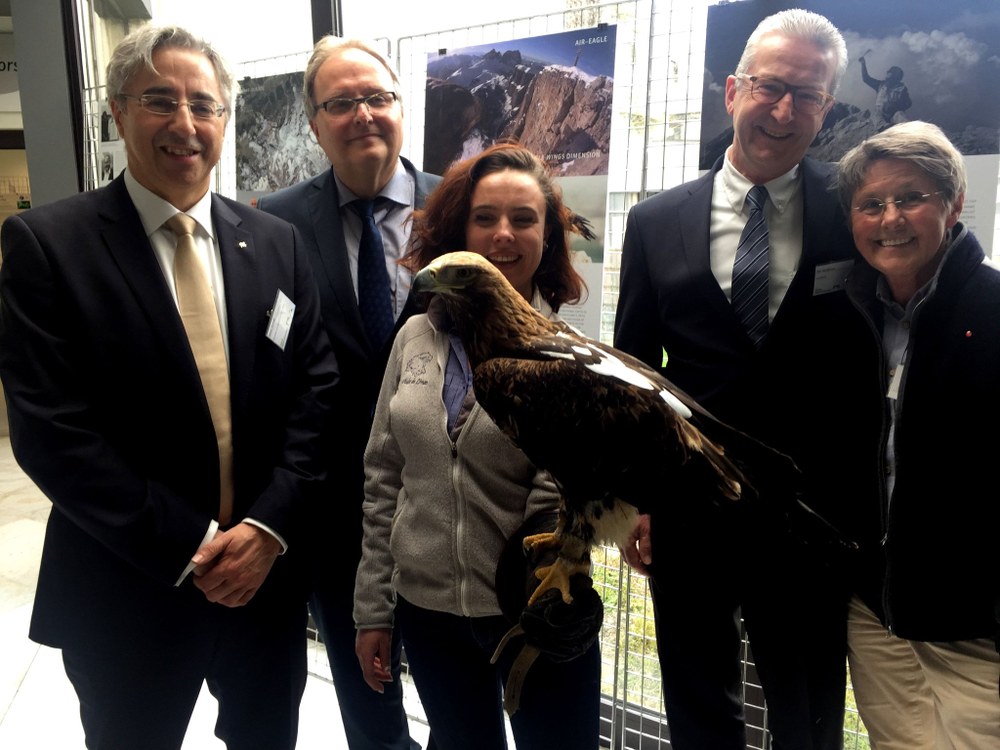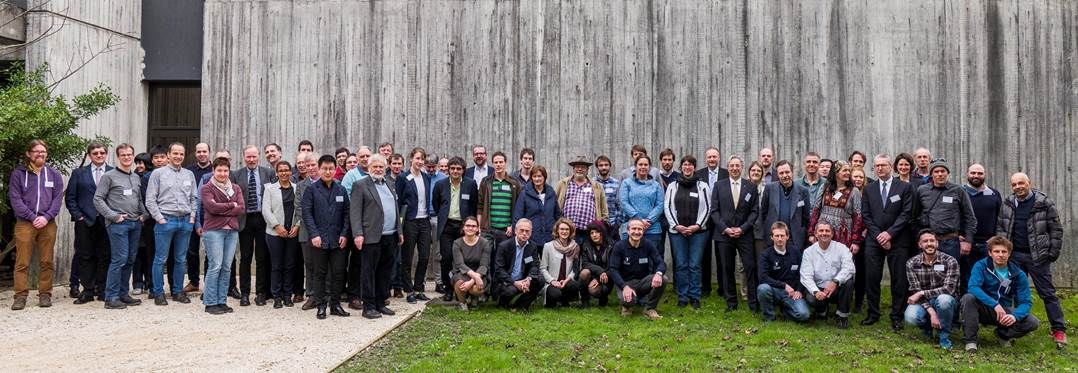Virtual Alpine Observatory (VAO): Fourth Symposium in Grenoble, France
The Fourth Symposium of the Virtual Alpine Observatory, VAO, took place from 13-15 March 2018 in Grenoble, France. It was attended by about one hundred scientists from the Alpine region countries Austria, Switzerland, Italy, Germany and France. Institutions affiliated with VAO in Norway and Georgia were also represented.
In the spirit of the VAO motto, “Joining Forces instead of duplicating efforts”, participants were informed about each other’s research and development activities in 45 lectures and 20 poster presentations. In other poster presentations many components of the VAO research infrastructure were also described.
At the symposium DFD scientists presented the latest results of their research and development work in the field of mesosphere dynamics (on gravity waves, infrasound and turbulence). They are based on measurements of atmospheric airglow (at ca. 90 km altitude) made at various VAO locations where ground-based infrared spectrometers and imagers are installed. Results were also presented on the possible influence of the solar magnetic field on the activity of large-scale planetary waves in the atmosphere and how this might relate to extreme weather events. There were other contributions on modelling air quality in Bavaria and Slovenia and on estimating environmentally-related health risks. Work was also presented on determining the extent of snow cover in the Alpine region and on task-sharing relating to further expansion of the Alpine Environmental Data Analysis Center, AlpEnDAC, together with colleagues from the Leibniz Supercomputing Centre, LRZ; bifa GmbH and UFS GmbH.
The Virtual Alpine Observatory (VAO) was launched on 19 April 2012 as a network of European high altitude research stations in the Alps and similar alpine mountain ranges. VAO now has participants from nine countries (the Alpine region countries Germany, France, Italy, Austria, Switzerland and Slovenia, as well as associated partners from Norway, Georgia and the Czech Republic). The system comprising the atmosphere, biosphere, hydrosphere, and cryosphere and the subject of potential environmentally-related health effects contain science challenges that can be addressed by this alliance to a depth that would not be possible without such international and interdisciplinary cooperation.
First and foremost, the VAO community focuses on the scientific investigation of ten urgent and complex issues (so-called “challenges”) relating to
- Atmosphere and climate variability
- Climate impact on alpine environments, hazards, and risks
- The alpine hydrological cycle
- Environment and health.
The challenges are specified in a VAO strategy paper introduced on 14 June 2017 in Brussels; it can be accessed from the VAO website.
One feature of the formulated research goals is that addressing the “challenges” frequently calls not only for international cooperation, but especially for an allocation of effort among various science disciplines (for example, when investigating the impact of the environment on people’s well-being). Each research community makes available its own measurements (and in some cases also instruments) for its share of the work. As a matter of course, data can be used that is already available from other sources (for example, satellite-based and aerial measurements) or collected by thematically-specialized affiliations with a monitoring infrastructure (such as GAW-DACH, NDMC, NDACC, ACTRIS, LTER, TERENO, etc.). The VAO community carries out its own measurement campaigns whenever the required data is unavailable or of inadequate quality.
The thematic complexity of various geophysical or biophysical parameters, and sometimes heterogeneous data structures relating to information technology, frequently require the use of the latest methodologies from the field of so-called “Big Data Analysis”. To support the research community in this respect, VAO develops and operates the Alpine Environmental Data Analysis Center, AlpEnDAC. Here also, VAO uses a task-sharing approach: various VAO partners make it possible to access elements of High Performance Computing and High Performance Data Analytics. Data can be merged with numeric models, for example atmosphere models. This achieves maximal knowledge gains at minimal cost after the shortest possible development cycle and contributes to increasing the competitiveness of the research community. This is an important aspect, because knowledge becomes globally available at an increasing pace. In the future, “operating-on-demand” methodologies will be developed, to mention just one of many innovations. If a particular geophysical situation is detected by an instrument at one monitoring site, other measuring systems will be automatically put into operation to make possible optimal monitoring of the phenomenon, needless to say, a challenge for the requisite information technology.

VAO is in the meantime also established at the political level. It is an element of the Alpine Convention. It also makes contributions to ARGE and EUSALP.
Dr Christian Barth, administrative head, Bavarian Ministry of the Environment and Consumer Protection, and chairman of the Consortium Board of the Schneefernerhaus Environmental Research Station, UFS, stressed in his speech Bavaria’s great interest in VAO and promised the expansion of the Alpine Data Analysis Centre, AlpEnDAC, as a significant contribution to further developing VAO. Bavaria has already supported research and development work by financing a Bavarian VAO Programme.

The appearance of VAO ambassador “Dayshan” was a special concluding highlight. Dayshan is a golden eagle introduced to conference participants by a French falconer. Photographer Nomi Baumgartl and the “Eagle Wings” project coordinator Helmut Achatz presented impressive photographs taken with a camera mounted on the back of a golden eagle flying over mountain tops. With their Eagle Wings project the artists want to draw attention to the unique beauty but also the vulnerability of the Alps.

Links
- Das Virtuelle Alpen Observatorium (VAO)
- VAO-Symposium 13.-15. März 2018
- VAO Strategy
- AlpEnDAC
- EAGLE WINGS - Protecting the Alps
- ALPCONV - Alpine Convention
- ARGE ALP
- EUSALP - EU Strategy for the Alpine Region
- WDC-RSAT - World Data Center for Remote Sensing of the Atmosphere
- Umweltforschungsstation Schneefernerhaus (UFS) auf der Zugspitze
- EO4Alps

